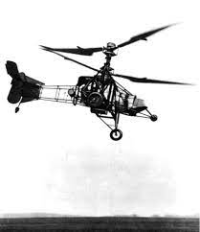kolibri282
Super Member
In the paper below Lois Breguet, world famous French air- and rotorcraft designer, presents a comparison between a fixed wing and a rotary wing aircraft and concludes that the fixed wing will have a much lower payload and shorter range. This is quite a surprise to say the least:
https://gallica.bnf.fr/ark:/12148/bpt6k9795806s/f77.item.r=autogire
Some of the advantages for the rotorcraft seem to come from the fact that for the fixed wing no flaps or other high lift devices are considered. Nevertheless I am really looking forward to the comments by the experts.
https://gallica.bnf.fr/ark:/12148/bpt6k9795806s/f77.item.r=autogire
Some of the advantages for the rotorcraft seem to come from the fact that for the fixed wing no flaps or other high lift devices are considered. Nevertheless I am really looking forward to the comments by the experts.
Last edited:

